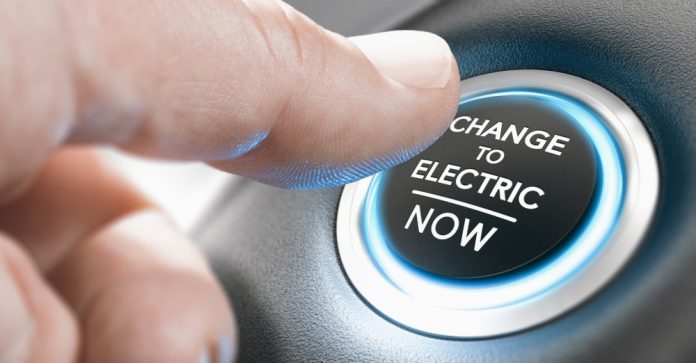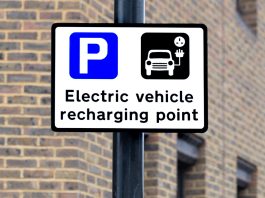The UK’s transition to electric vehicles (EVs) is gaining momentum, but new research by the AA highlights a wide spectrum of driver attitudes towards EV adoption.
While over half of drivers, identified as ‘Potentials,’ indicate they are likely to switch to an EV within the next five years, a significant number remain hesitant.
This divide underscores the pressing need for stronger incentives, better infrastructure, and enhanced public awareness to ensure a seamless transition to an electrified future.
Diverse attitudes towards EV adoption
The AA’s study categorises drivers into four groups based on their likelihood of purchasing an EV.
Adopters, who account for just 7%, are those who already own or have driven an EV. Potentials, making up 52% of drivers, are open to switching but are not yet committed. Doubters, comprising 20%, are unsure about the transition, while Rejectors, at 22%, express no intention of ever owning an EV.
These findings reveal the complexity of public sentiment surrounding EVs and highlight the need for targeted strategies to encourage wider adoption.
Government policies alone are not enough
The UK Government’s 2030 ban on new petrol and diesel car sales is a key component of its strategy to push EV adoption.
However, the AA’s research suggests that while this policy will influence vehicle supply, it does little to directly support consumers in making the switch.
Many drivers feel that they are being forced into this transition without adequate guidance or assistance.
The assumption that mandating zero-emission vehicle (ZEV) sales will naturally generate demand is proving to be flawed, as many drivers remain uncertain about whether an EV is a practical choice for them.
Key barriers hindering EV adoption
One of the biggest challenges for EV adoption is affordability. The average price of a new EV in 2024 stands at £59,216, significantly higher than the £46,991 average cost of petrol vehicles.
Although the second-hand EV market is expanding rapidly, growing by 63% in 2024 alone, EVs still represent only 2% of used car sales. High upfront costs and concerns about resale value deter many drivers from making the switch.
Charging infrastructure remains another major hurdle. Approximately 40% of drivers lack access to home charging, making public charging stations essential.
However, with 72% of drivers citing inconvenience as a major downside of EV ownership, it is clear that improvements are needed to ensure a smooth charging experience.
Addressing this issue requires significant investment in public charging networks and better visibility of charging points.
Misinformation and confusion also play a role in slowing EV adoption. The AA’s study found that 7% of drivers incorrectly believe that all petrol and diesel cars, including used ones, will be banned, while a third mistakenly think they can purchase a manual EV.
Additionally, 73% of internal combustion engine (ICE) drivers have never even experienced driving an EV. These misconceptions create uncertainty and hesitation, further delaying the transition.
Steps to accelerate EV adoption
To overcome these barriers, the AA recommends a nationwide public awareness campaign led by the government and industry.
This initiative would provide clear and accurate information about EVs, addressing doubts and helping drivers make informed decisions.
By dispelling myths and increasing familiarity with EV technology, the campaign could significantly boost consumer confidence.
Financial incentives also play a crucial role in making EVs more accessible. The government could introduce targeted support, such as tax breaks or loans for EV purchases and home charging installations.
Additionally, reducing the VAT on public chargers from 20% to 5% would align it with the tax rate for home charging, making EV ownership more equitable for those without private driveways.
Supporting the second-hand market is another vital step. The introduction of battery health passports would help alleviate concerns about the longevity and reliability of used EVs.
By increasing transparency and confidence in the resale market, this initiative could make EVs a more attractive option for a wider range of buyers.
The AA also suggests allowing new plug-in hybrid vehicles between 2030 and 2035 as a transitional option for drivers hesitant to commit to full electrification.
This approach acknowledges that not all consumers are ready to switch to fully electric vehicles overnight and provides a middle ground for those still adapting to the change.
Charging infrastructure improvements are essential for increasing EV adoption. Simplifying regulations to enhance the visibility and accessibility of charging stations would make the transition smoother for drivers.
Clearer signage and better integration with navigation systems could alleviate concerns about charging availability and reduce range anxiety.
Addressing secondary aspects of EV ownership is equally important. Many drivers remain unaware of available support for maintaining, repairing, or insuring EVs.
Resolving issues related to insurance costs, maintenance delays, and resale value would enhance the overall EV ownership experience, making the switch more appealing.
Driving the UK’s EV transition
The findings from the AA’s research demonstrate that while progress has been made, there are still significant challenges to overcome before mass EV adoption can be achieved.
Government policies alone are insufficient; a combination of financial incentives, better infrastructure, and public education is required to drive meaningful change.
By addressing consumer concerns and providing practical support, the UK can accelerate its journey towards a cleaner, more sustainable transportation future.









